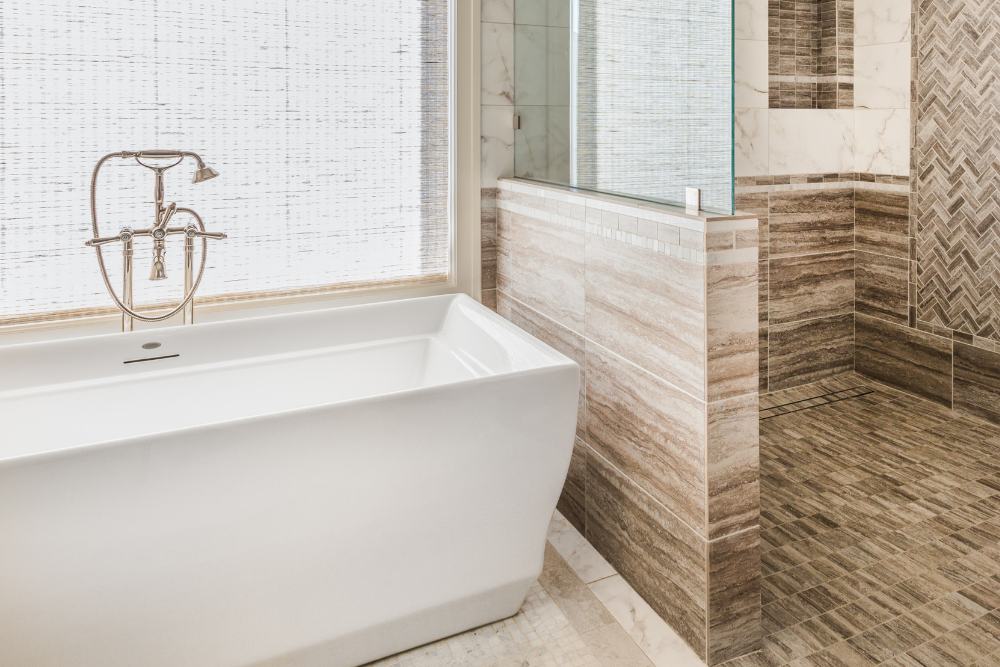Can I Put a Shower Over a Freestanding Bath?
Yes, it is possible to place a shower over a free standing bath. When it comes to the most suitable baths to use with a shower, the most popular choices are P-shaped, L-shaped and standard. While a shower can technically be installed above any type of bath, these three options provide the easiest installation process.
When it comes to installing a shower over a freestanding bath, there are a few things you need to consider. If the freestanding bath is being placed next to a wall, the shower head and components can easily be placed on a mount on the wall.
However, if the freestanding bathtub has been placed in the middle of the room, or away from any walls, this can make the installation process slightly more difficult. This is because the shower will then need to be installed on the freestanding bath itself, rather than a wall. You will also need to take into account the plumbing involved.

When installing a shower over a freestanding bathtub, there are two options you can consider. The first option is installing the shower head and valve on a wall. This is one of the more common ways to install a shower with a freestanding tub.
The second option is to install the shower and the separate fixture to the freestanding bath itself. This will involve adding a shower riser, support rod, curtain ring, and shower head. It is a longer process but is fairly easy to achieve.
We would recommend installing a shower curtain or screen to the freestanding bathtub. This will ensure the surrounding floors remain dry when the shower is in use.
What is great about using a shower curtain is that it can be folded when it is not in use, which will keep the openness of the freestanding tub. However, certain types of shower head, such as a rainfall shower head, may not need a shower curtain or screen installed.
Can I put a freestanding bath in a wet room?
Yes, it can be possible to put a freestanding bath in a wet room. However, it is not something we would recommend. This is because wet rooms are designed for use with a shower, rather than a bath.
A wet room removes the need for an enclosure and usually uses a glass screen. Given how wet rooms are structured, and how they are drained, baths are not the most suitable option. Wet rooms usually contain a drain in the floor of the room, and the floor is slightly sloped in such a way that the water can drain easily.
When using a shower, the water hits the floor in a fairly consistent and slow manner. As a result, the floor does not flood, and the water can drain easily.
If you do choose to install a freestanding tub, we would recommend speaking to a professional plumber to discuss whether it is possible with your specific wet room. While it may not be easy to achieve, with professional help it may be possible.
A plumber would likely have to install a separate drain, and plumbing for the freestanding bath that drains the water directly from the wet room, rather than the water being drained onto the wet room floor. This would prevent standing water that would take a while to drain and could lead to flooding.
The water from the bathtub will need to be drained completely separately.
Given this, the pipe would be better suited when fed through the wall to drain, rather than the wet room floor itself. Though, this is not always possible.
Freestanding baths require the correct plumbing. When installing them into a bathroom, or a wet room, you will always need to ensure this is possible. Installing a freestanding bath in a wet room is not the most ideal choice.




